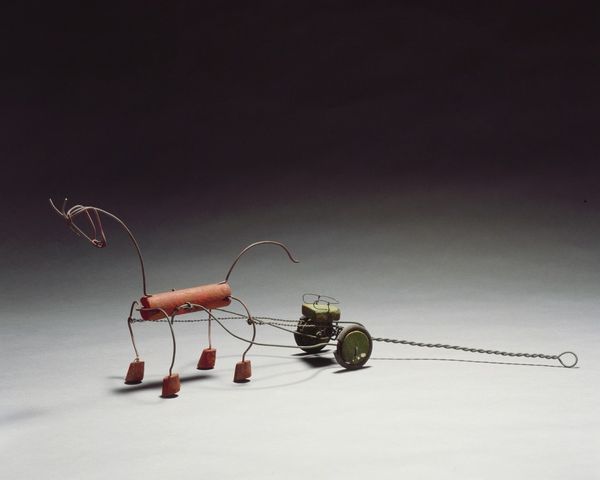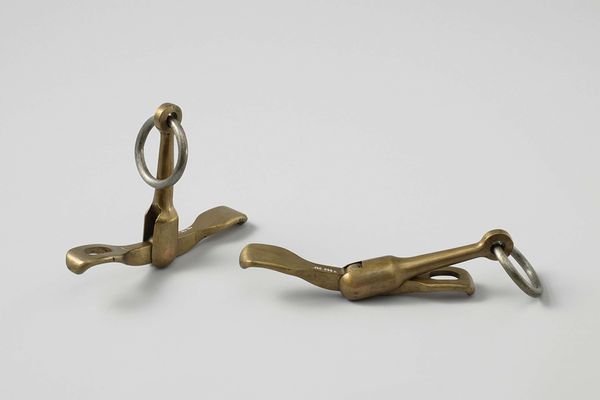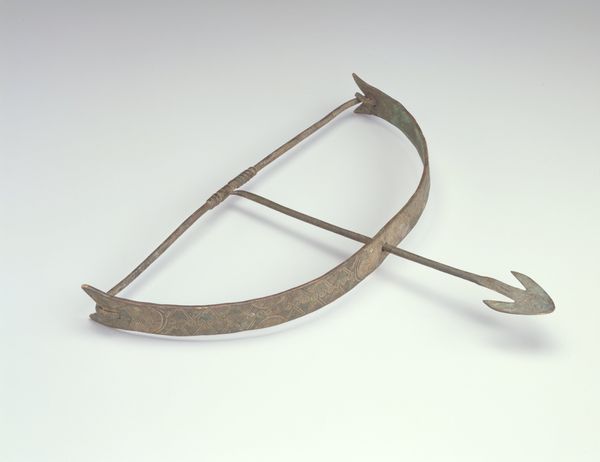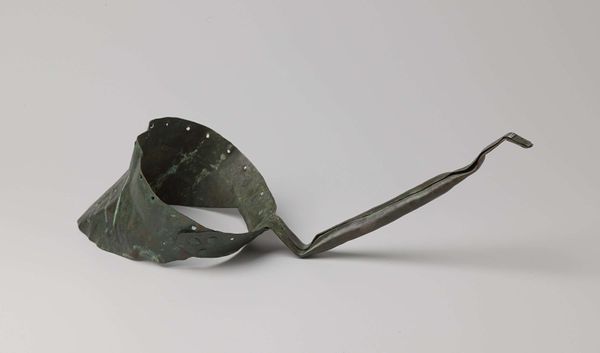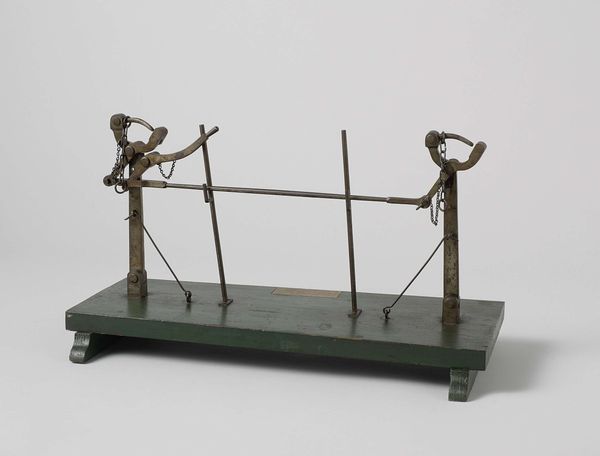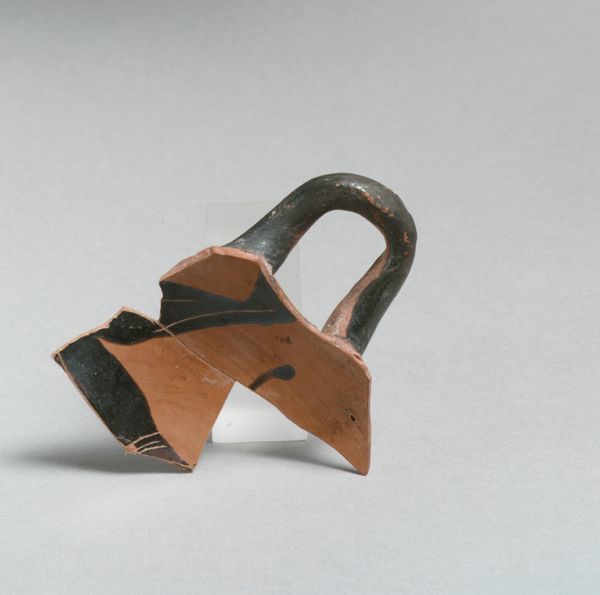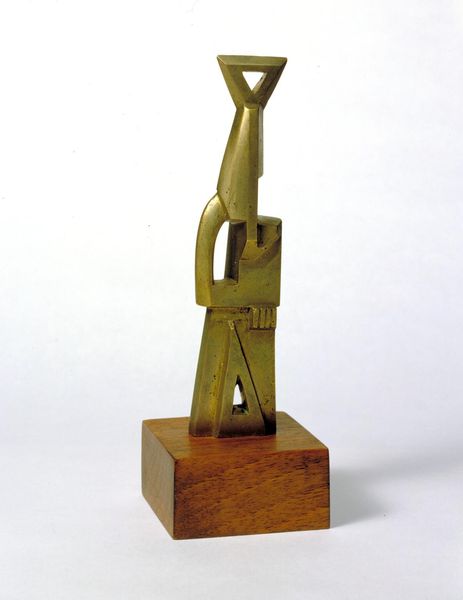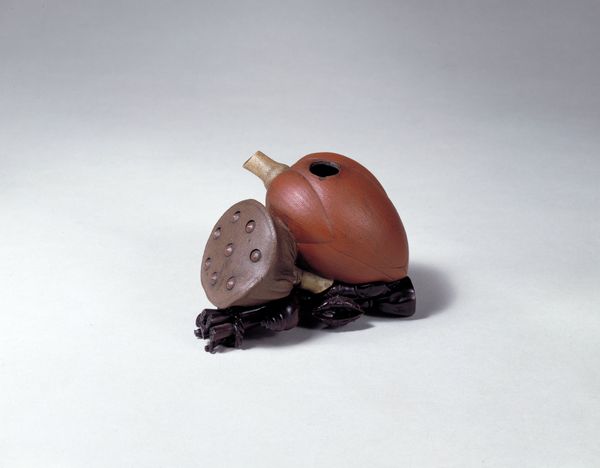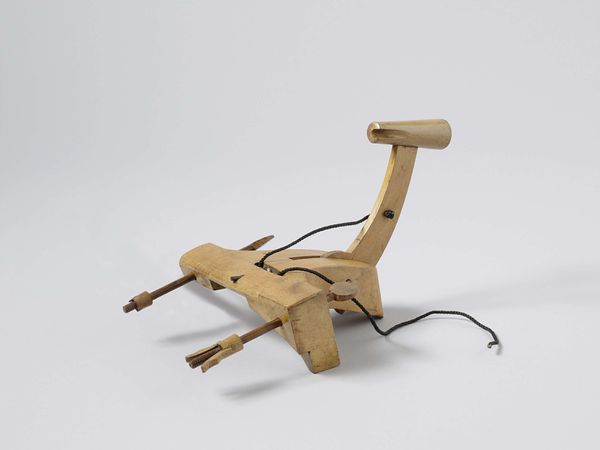
automatism, mixed-media, metal, photography, sculpture, mobile, wood
#
kinetic-art
#
automatism
#
mixed-media
#
metal
#
sculpture
#
photography
#
dada
#
sculpture
#
mobile
#
wood
Copyright: Alexander Calder,Fair Use
Editor: This is Alexander Calder’s *Duck and Snake*, made in 1926 from wood and metal. It seems almost like a playful toy, but with a strange tension between the two figures. What do you see in this piece from a formal perspective? Curator: The construction certainly has an inherent interest. Note the contrast between the static, horizontal base and the potential energy suggested by the coiled snake, vertically poised. It establishes a visual dynamic that activates the space. What structural elements stand out to you? Editor: The contrast in textures is striking – the smoothness of the painted duck versus the rough, spiraling snake. It adds a tactile dimension to what is ostensibly a visual experience. Curator: Precisely. And consider the strategic deployment of color. The subdued palette of the wood emphasizes the bright accent of the duck's bill, creating a focal point that draws the eye. Do you observe how Calder balances line and form to achieve visual harmony? Editor: Yes, the simple, almost childlike, shapes of the duck are countered by the more complex curves of the snake. It creates a balanced asymmetry. I never considered a child's toy could be a vehicle for exploring fundamental design principles like balance and tension. Curator: Indeed. The piece reveals how seemingly simple forms can articulate sophisticated aesthetic relationships when subjected to rigorous formal analysis. Its materiality and the artist’s process contribute to its inherent artistic value. Editor: I see what you mean. By focusing on the formal elements, you appreciate the construction in a completely different light. Thank you!
Comments
No comments
Be the first to comment and join the conversation on the ultimate creative platform.
